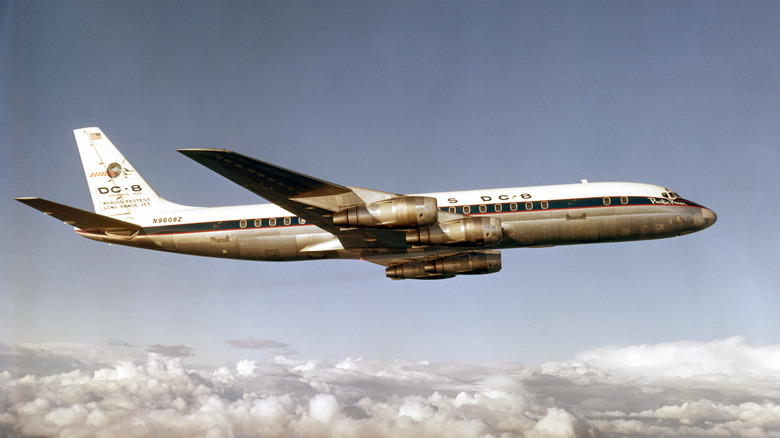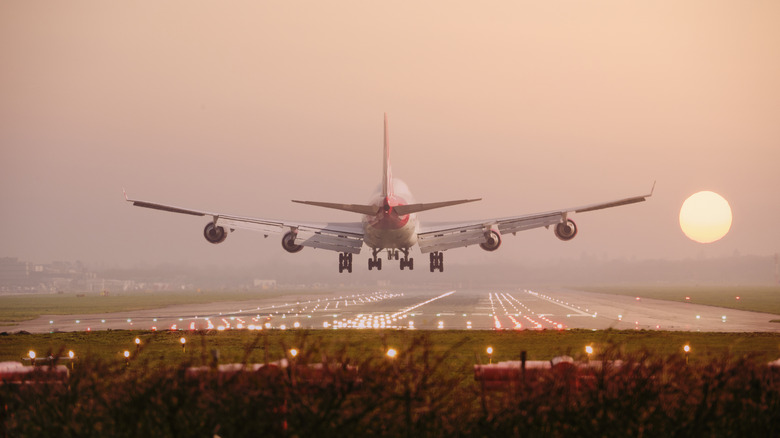What Was McDonnell Douglas And Why Did It Merge With Boeing?
Boeing, Lockheed Martin, and Northrop Grumman are all names most people have heard, especially if you're in the aeronautical industry or simply an enthusiast. A name nobody hears nearly as frequently these days is McDonnell Douglas, an aircraft manufacturer that was once just as big a name as Boeing and the others. McDonnell Douglas is the defense contractor that designed and built the F-15 Eagle and F/A-18 Hornet, among other planes.
McDonnell Douglas was birthed in 1967 from a merger between the McDonnell Aircraft Corporation and the Douglas Aircraft Company, two companies that had been active since 1939 and 1921, respectively. The newly merged company was hard at working developing the mid-sized DC-10 jet that would go on to serve multiple commercial airlines as well as delivery services like FedEx. The DC-10 outsold Lockheed's L-1011 Tri-Star, its strongest competitor at the time.
The aircraft manufacturer truly shone with its military aircraft, though, delivering planes to the United States, Great Britain, Italy, and Japan. However, production slowed by the '90s. When Boeing and Airbus found success with widebody designs, McDonnell Douglas attempted to follow suit, designing a double-decker plane, the MD-12 – but no airlines placed an order. There were whispers throughout the '90s that McDonnell Douglas would go under or be absorbed by another aerospace contractor. Nothing became official until 1996, when the official announcement came: it would merge with Boeing.
By 1997, McDonnell Douglas was no more
McDonnell Douglas faltered because it couldn't keep up with the success Boeing and Airbus were having. By the time Boeing took an interest in its competitor, McDonnell Douglas was only developing four planes, the MD-80, MD-90, MD-95, and MD-11. Meanwhile, Boeing had its contracts for commercial aircraft, military, and even participated in the construction of the International Space Station. Boeing also won the Joint Strike Fighter concept contract in November 1996, when it designed the X-32A. Of those four planes McDonnell Douglas had in production, only the MD-95 and MD-11 would survive the merger.
Boeing would continue using the MD-95, incorporating it into its 7X7 series of aircraft by renaming it the 717. The MD-11 would only be used as a freighter aircraft. Absorbing McDonnell Douglas gave Boeing access to the company's surplus factory capacity, but also made it subject to a Federal Trade Commission investigation, ensuring that no antitrust laws were being broken. It wasn't just the FTC Boeing had to go through, either. The European Commission, the European Union's antitrust enforcement organization, also had to sign off on the $13.3-billion merger.
It took a little more than seven months and some concessions from Boeing that assuaged the European Commission's concerns, but the EC and FTC eventually approved the merger on July 30, 1997. This expanded Boeing's military presence, allowing the company to modernize old MD fighters inro the F-15EX and F/A-18 Super Hornet.

